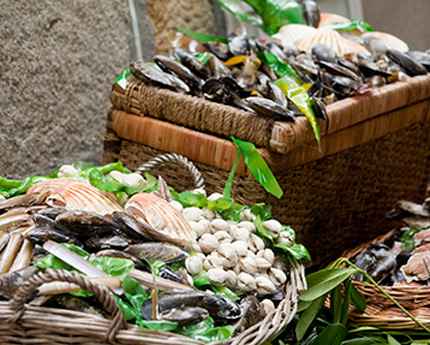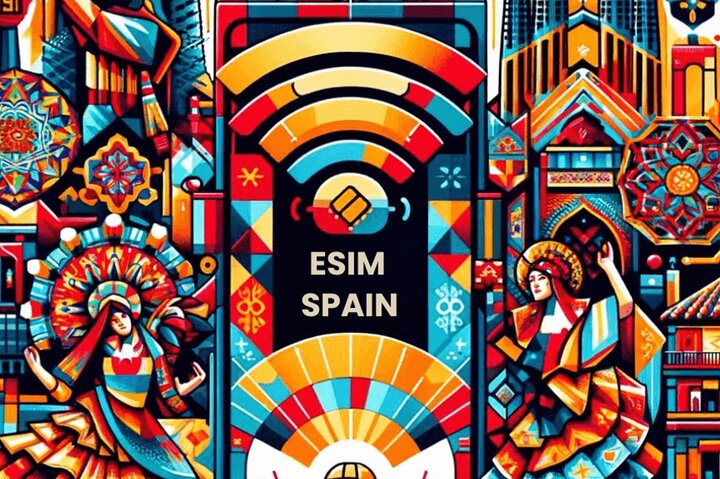When talking about Vigo’s traditional food, special mention has to go to the produce gathered along its coastline, mainly from the estuary. Fish and seafood are the stars of the menus of all its restaurants, from the most gourmet to the most popular and traditional.
However, you will also find other traditional dishes in Vigo’s restaurants and homes based on pork and the delicious and juicy Galician beef. As well as this, it should not be forgotten that Galicia is a decidedly agricultural land, so Galician potatoes and all kinds of vegetables also feature on the banquet table. That’s not forgetting a wide variety of sweets and desserts, which are often washed down with a good queimada de orujo.
As a reference, Vigo’s traditional food has a lot of similarities and shares many dishes with that of other parts of Galicia. Take for example traditional food in neighbouring Ourense.
- Seafood
- Peixiños fritos
- Queimada
- Churrasco
- Lacón con grelos
- Ternera asada en tartera
- La casa del Abuelo
- Pimiento de Padrón (or Herbón)
- Empanada
- Traditional Galician desserts
- Hotels with restaurants in Vigo
Seafood
The seafood caught or collected in the estuaries close to Vigo is unequalled in terms of quality, appearance and flavour in Spain. That is why, in all its different forms, it is the star dish of most of the best restaurants in Vigo (link to corresponding URL).
Some of the most popular include mussels, scallops (local ones are becoming increasingly rare), bay scallops, clams as well as some crustaceans, such as velvet crab, spider crab, Norway lobster and lobster. Barnacles are also delicious when in season. All of them are cooked in seawater with few other additions in order to boost their amazing flavour.
Furthermore, it must not be forgotten that in Vigo, as in all of Galicia, octopus, prepared a feira (with boiled potatoes, paprika and olive oil) as well as fried (especially its tentacles), is the undeniable star of the menus of the most popular restaurants.
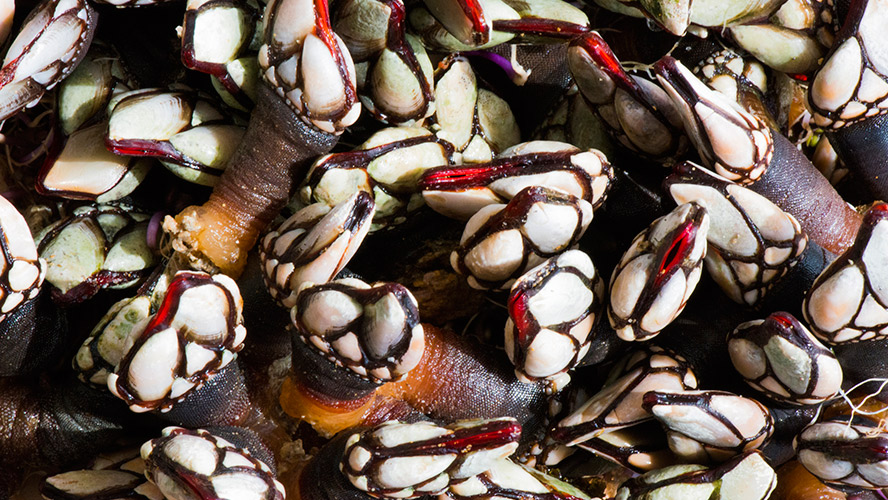
Peixiños fritos
Peixiños are nothing more than little fried fish and, as in other parts of the country, they come deep fried. This gives them an irresistible crispy texture as well as boosting their pure sea flavour.
The most common species used in a dish of peixiños fritos are chinchos (small Atlantic horse mackerel) and xoubas (or small sardines). They usually come accompanied by a generous portion of Padrón peppers (or Herbón peppers), which are also fried.
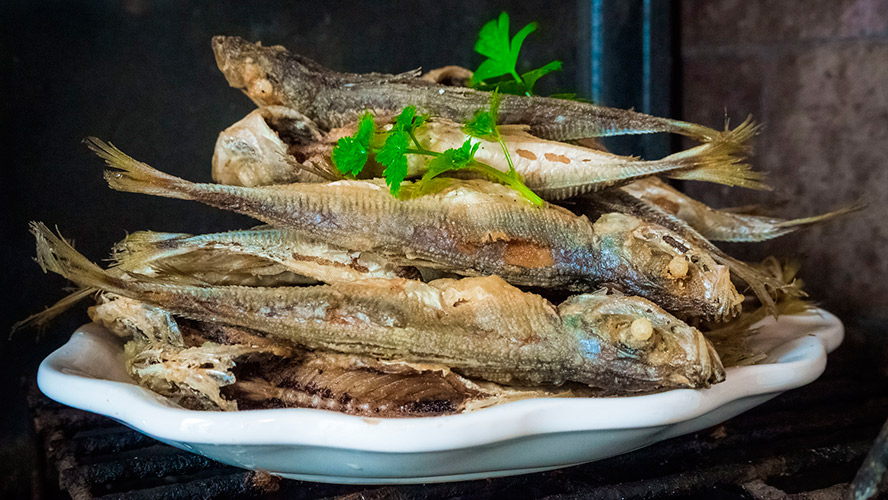
Queimada
Queimada is not a dish as such but a beverage made from orujo infused with a few coffee beans. It is served in a ritual-like way with a conxuro, a few words that are recited while it is being made. This is done to copy the old rituals performed by meigas (witches). The name queimada comes from the way the orujo is burned in a large cooking pot, thus losing a large part of its alcohol content.
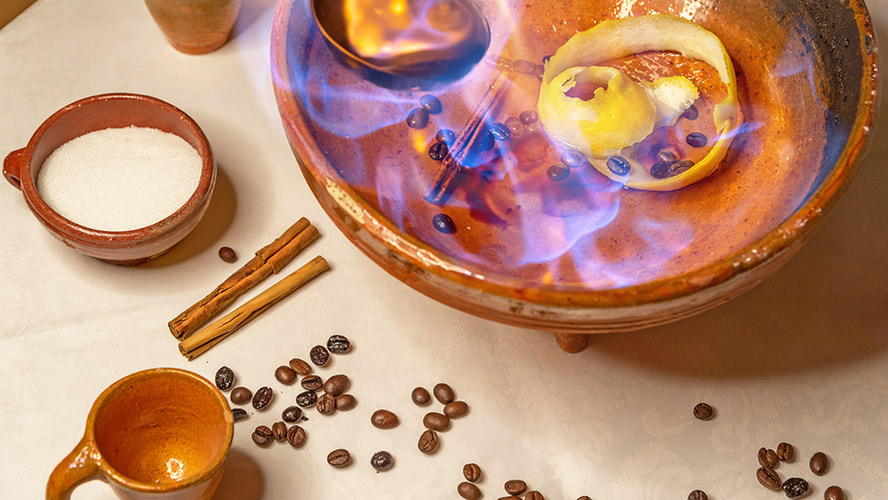
Churrasco
Pork is a key part of traditional food in Vigo and all of Galicia. One of the most prized parts are pork ribs, which people like to prepare grilled over a wood-fire, accompanied by a hearty sauce, roast potatoes and chorizo criollo, for what is known as a churrasco. In the past, the meal was only eaten for family or traditional celebrations.
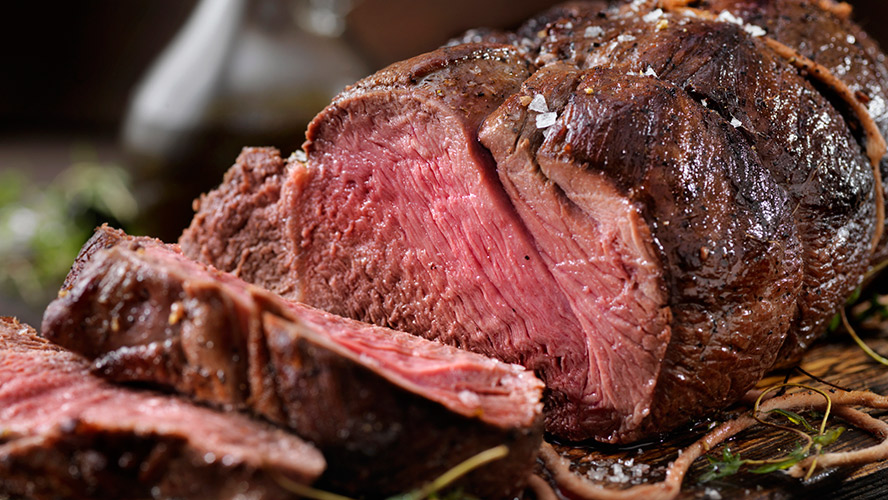
Lacón con grelos
Lacón is the meat obtained from the forelegs of pigs (the hind legs are used for ham). In Galicia, the meat is boiled and then served on a plate cut into thick chunks together with boiled turnip tops, the leafy part that grows above ground. It also often comes accompanied by boiled Galician potatoes, which are characterised by their yellowy colour and very nice, intense flavour.
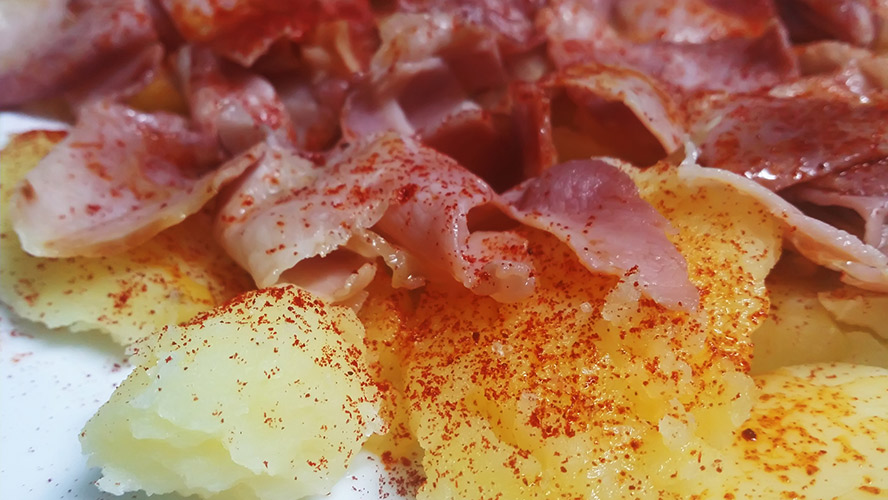
Ternera asada en tartera
An important traditional dish in Vigo, it can also be found in many other parts of Galicia. The tartera to which it refers is a wide casserole dish with a lid, although it also translates as ‘lunch box’ in Spanish.
This way of cooking Galician beef makes use of the meat’s own juices and is a great alternative to oven cooking. The stew used to only be eaten for celebrations but it is now commonly eaten at any time of the year. It comes accompanied by the omnipresent Galician potatoes and from time to time other vegetables.
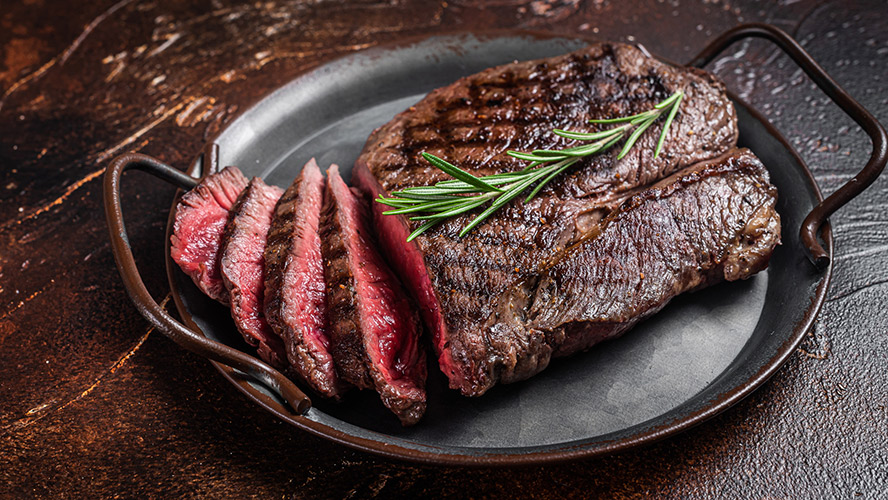
Pimiento de Padrón (o Herbón)
This dish is not just a common feature of traditional food in Vigo, in fact it is typical of the whole of Galicia and, arguably, the whole of Spain. Originally from the village of Herbón in Galicia and small in size, the peppers are deep fried in olive oil and served as an appetiser by themselves or to accompany other dishes.
Their main feature is that they can be sweet or spicy and it is very difficult to know what to expect. This makes eating them a type of fun culinary game, especially when shared among various diners.
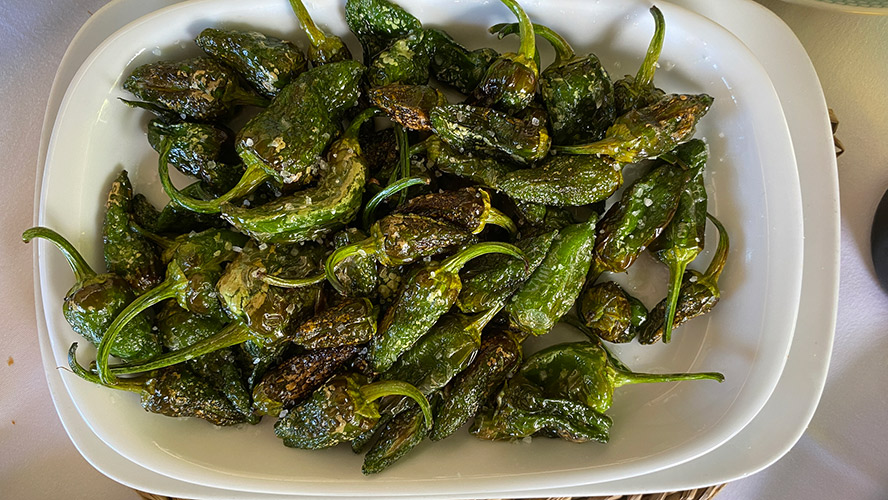
Empanada
Galician empanadas are a true delicacy. And, like Padrón peppers, they are a central part of Spanish cooking’s wide variety of dishes. Unlike other empanadas (especially those made from puff pastry), the dough used in Galician ones is similar to bread (or Italian focaccia) and, in terms of the filling, aside from vegetables such as onions and peppers, delicacies such as bay scallops, cod, Galician beef, chorizo or ground chorizo, and tuna, among others, are used. They make a perfect snack at any time of the day.
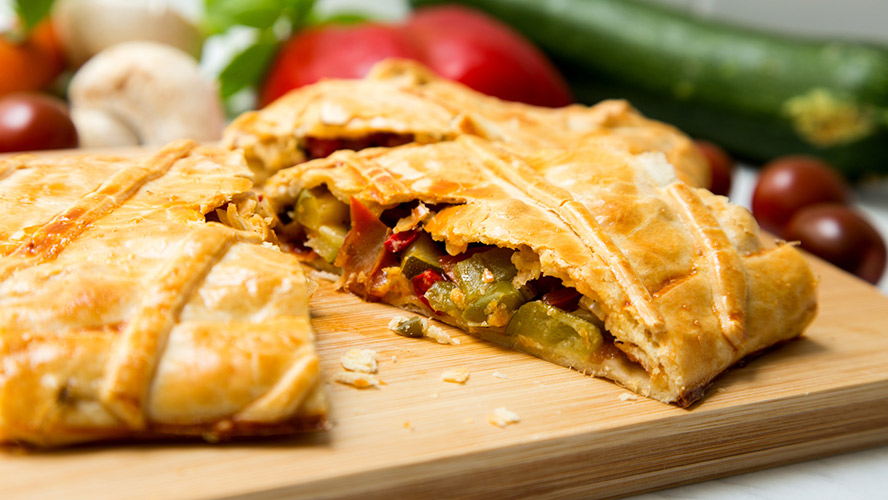
Traditional Galician desserts
There are a wide range of desserts to be found in Galicia. And that goes for cakes and pastries too. These are some of the most popular and most tantalising:
- Filloas
The quintessential Galician dessert, these consist of very thin, crêpe-like pancakes made from flour, milk and egg. Once cooked in the pan they are topped with sugar, honey, custard, jam… depending on individual tastes.
- Llanderas
This cake was created by Policarpo Sanz, a Vigo-born pastry chef, in the 1950s and can be found in various patisseries in the city. It consists of a sponge cake covered in cream and almond flakes, topped with a few chocolate curls.
- Roscón de A Guarda
This bun, created in the 1960s in the town of A Guarda in Pontevedra, is a brioche made from flour, eggs, sugar, salt, butter and a touch of aniseed. What makes it different is its sugared egg yolk filling.
- Orejas de Entroido
In the past, this dessert was typically eaten at Galicia’s carnival but it is today a common dish in homes and restaurants. It consists of a deep-fried dough made from flour, eggs, butter, sugar, lime and lemon zest. Once the oil has been drained they are coated in sugar. Their crispy texture is truly irresistible.

Hotels with restaurants in Vigo
Right in the city centre is the Occidental Vigo hotel, a four-star establishment with a total of 104 rooms. All of the rooms offer exceptional comfort, decorated in a modern, practical style with lots of tasteful details.
In addition to the full breakfast served at the hotel, consisting of local, seasonal produce, you can also enjoy an aperitif or a light tapas lunch at the snack bar. From there you can also take in the magnificent panoramic views of Vigo estuary.







































































